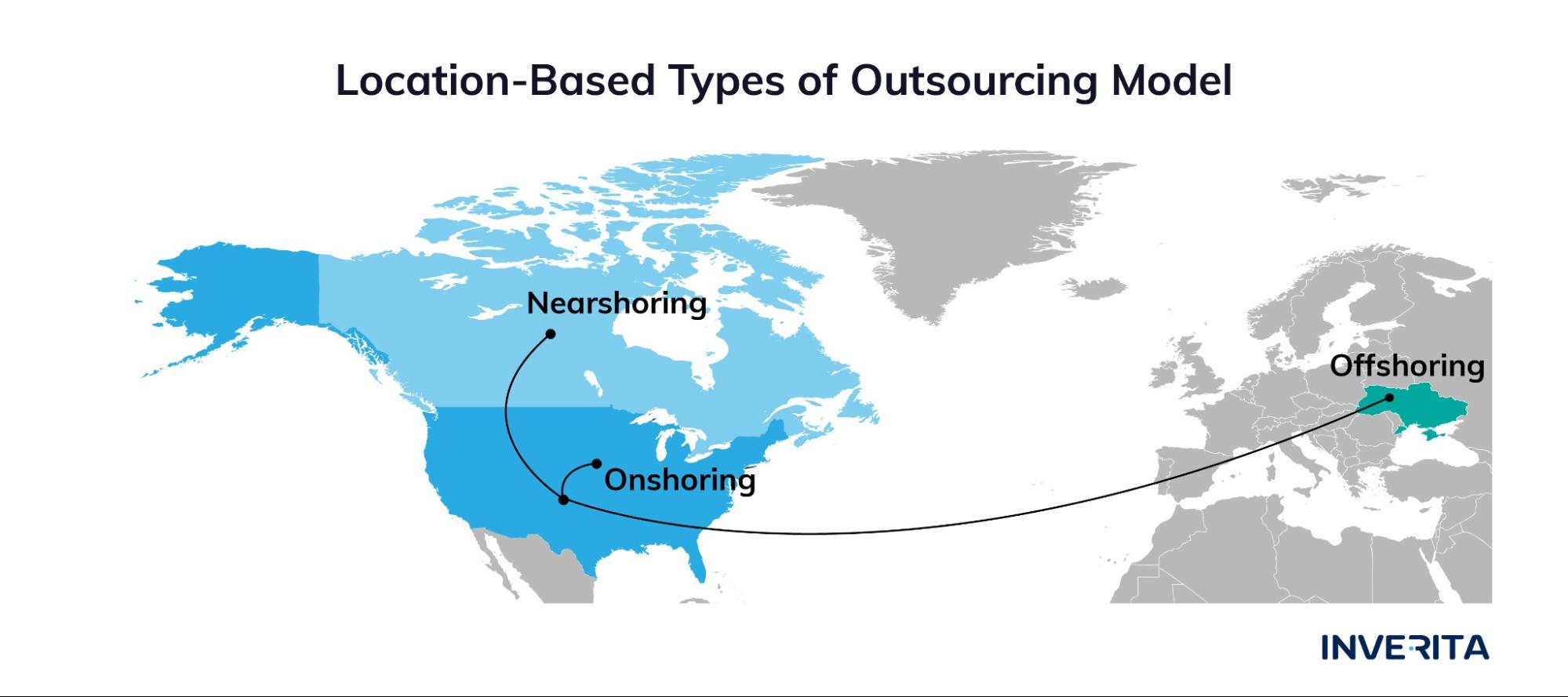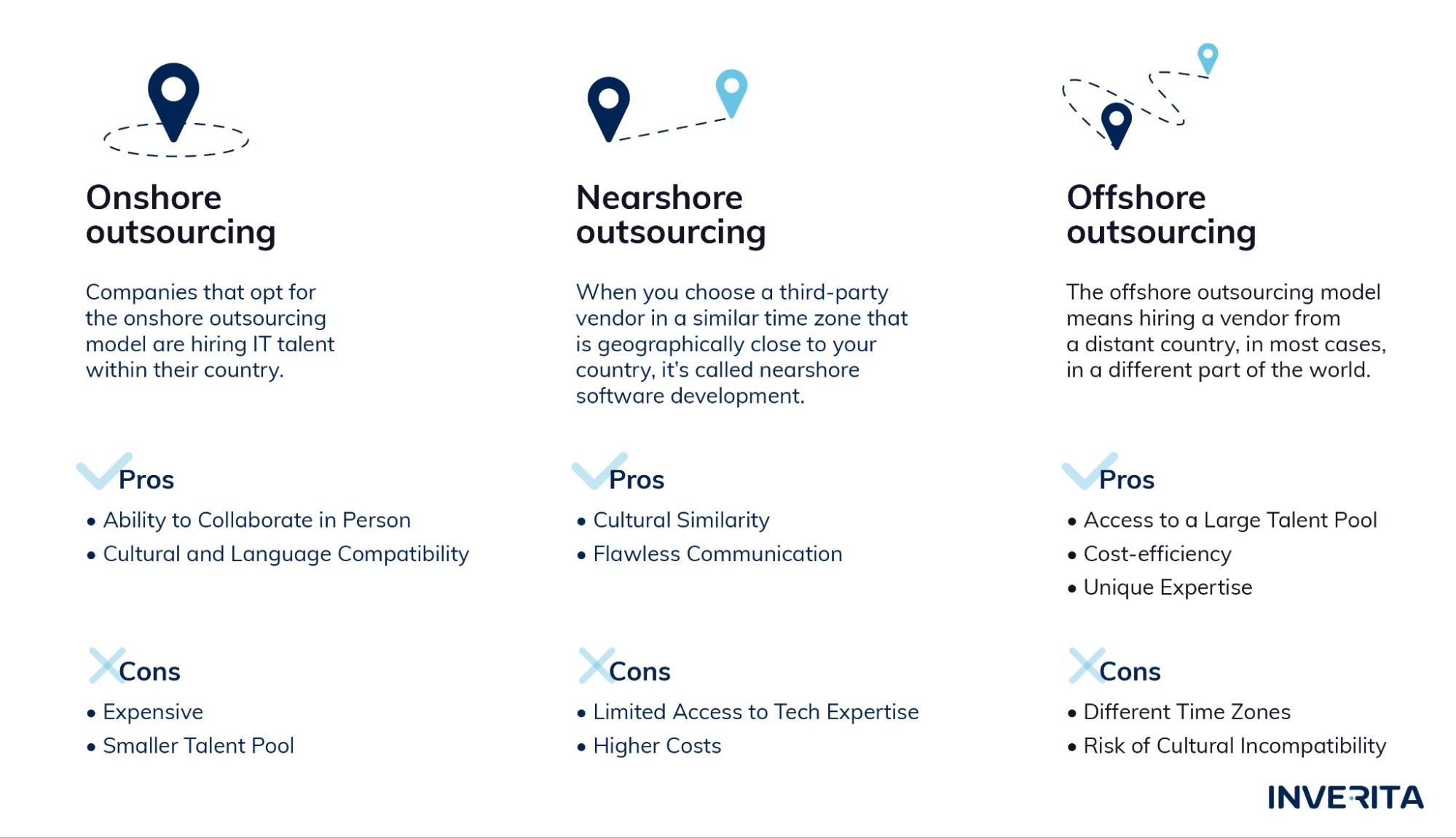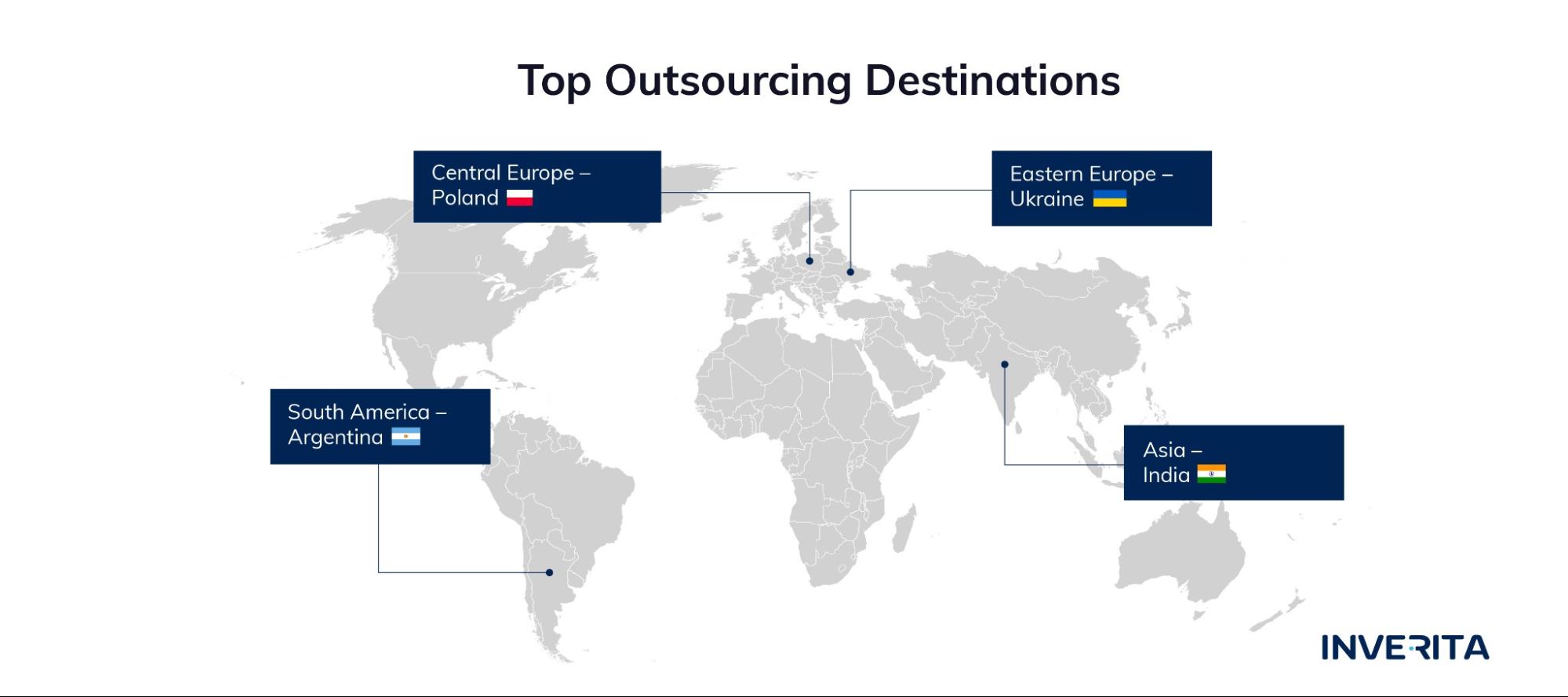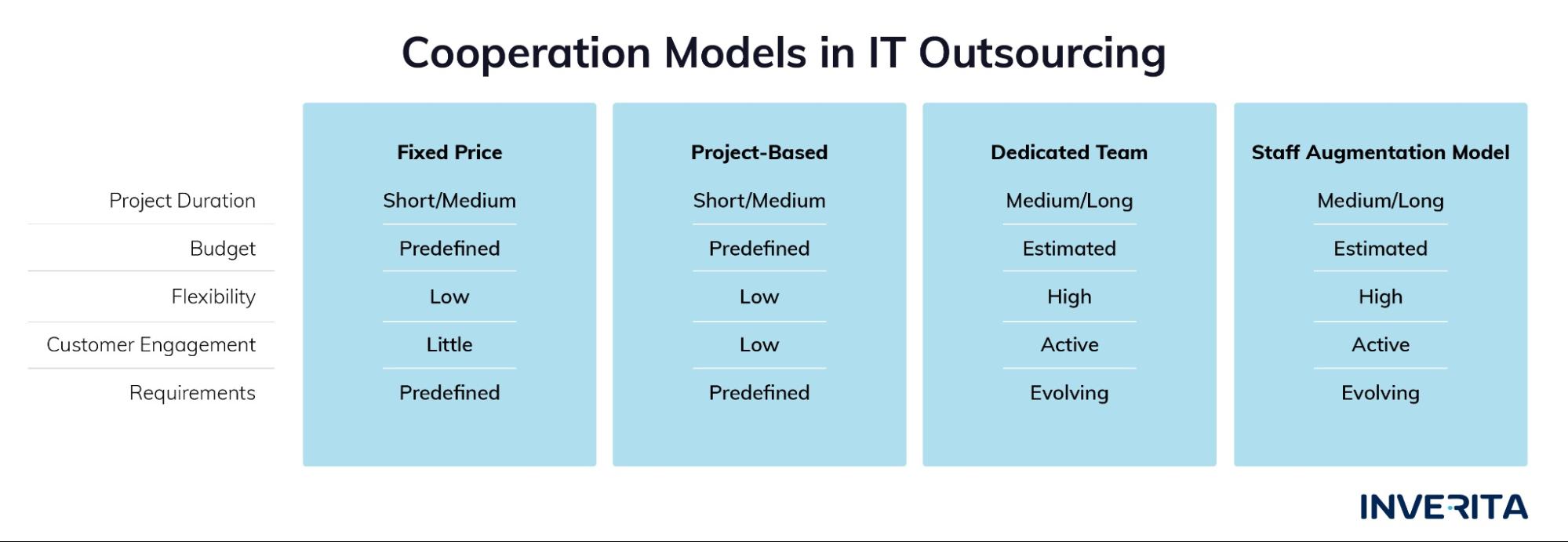# Limited Access to Tech Candidates
There might not be a sufficient number of service providers or engineers with enough expertise in neighboring countries. The task gets more complicated if you are searching for a particular tech stack and domain. Therefore, it can be difficult and time-consuming to mitigate the shortage of tech talent.
What is Offshore Outsourcing?
Offshore Outsourcing is hiring a vendor from a distant country, most frequently, from a different part of the world.
Practicality for Business: offshore outsourcing allows you to partner with geographically distant ventures and saves big sums of money.
Advantages of Offshore Outsourcing:
#1 Cost-efficiency
One of the biggest advantages of One of the biggest advantages of partnering with an offshore software development company is the price. While delegating to a nearshore partner slightly differs in price, hiring an offshore partner can save you a lot of money. Far offshore destinations offer skilled developers almost half of the hourly wages compared to developers located in the US, UK, Canada, etc.
#2 Access to a Large Talent Pool
According to the ICIMS report, in the US within the last three years, employers managed to hire only 60% of the tech talent required. Surprisingly, the number of applicants was twice as high as the number of open positions. Such a tendency has been dictated by a shortage of qualified tech candidates. While opting for offshore outsourcing you get access to tech expertise in any part of the world.
#3 Unique Expertise
You get access to experts who have experience working with various tech stacks and domains. Actually, within a short period of time, you can fulfill the needs of your project with any tech expertise. Furthermore, IT outsourcing destinations such as Eastern Europe, for example, regularly invest in STEM and CS education for engineers. So, there is no doubt you can hire the uppermost tech talent without spending abnormal sums of money.
Disadvantages of Offshore Outsourcing
#1 Cultural Incompatibility
Cultural differences are one of the major reasons why offshore outsourcing fails or causes a lot of problems. One of the simplest examples is the Indian “yes” syndrome. In Indian culture, people try to avoid giving negative answers, so if you wonder if it’s possible to have the bugs fixed by tomorrow morning, and you get a positive answer, most probably, it means “I’ll do my best”.
#2 Time Zones Difference
Living in different time zones can cause a plethora of inconveniences such as missed deadlines or poorly executed work as a result of lack of control. Therefore, ensure setting clear requirements and a stable meeting schedule with your outsourcing partner to keep an eye on the development process.
Let’s Also Talk About Onshore Outsourcing - What is That One?
Outsourcing software development within the same country is called onshore outsourcing.
Practicality for Business: This model is the best match for companies with an already-established in-house team that is involved in the project.
Advantages of Onshore Outsourcing:
Ability to Collaborate in Person
Onshoring software projects gives an ability to collaborate in person which means not only higher productivity but also gives better control over intellectual property. Both parties are subjects of the same data protection laws which immediately enforce confidentiality.
Cultural and Language Compatibility
When software development is outsourced in the same country, it’s much easier for teams to blend with each other and cooperate, as they speak the same language and have the same culture. This significantly speeds up the development process and improves the quality of deliverables.
Disadvantages of Onshore Outsourcing:
Expensive
Onshore development in most cases is much more expensive than hiring an offshore team, or even nearshore developers. However, it largely depends on the country.
Smaller Talent Pool
When companies choose onshore outsourcing, they get access to the tech talent available only within their country so the range of tech stack and services might be quite narrow.
Nearshore vs Offshore - Key Differences
Usually, the main driver that makes companies outsource is the scarcity of tech talent in their location and this problem is spreading at a great speed. The justification is the Bureau of Labor Statistics that predicts more than 1,2 million open job positions by 2026. It means that onshore software development services are not a common choice and they have to choose between nearshore and offshore development.
Offshore software development is a great choice for complex projects with a specific expertise required when a customer wants to start the development as soon as possible and save money.
While nearshore development is less cost-effective though makes it easier to maintain communication with a team and control the development process.











_1764586939-small.webp)
